“Saftey and effectiveness metal welding is essential in manufacturing, consolidating science and precision to fuse distinct metal pieces into a unified whole. It is the invisible force holding structures, vehicles, and various metal components together.”
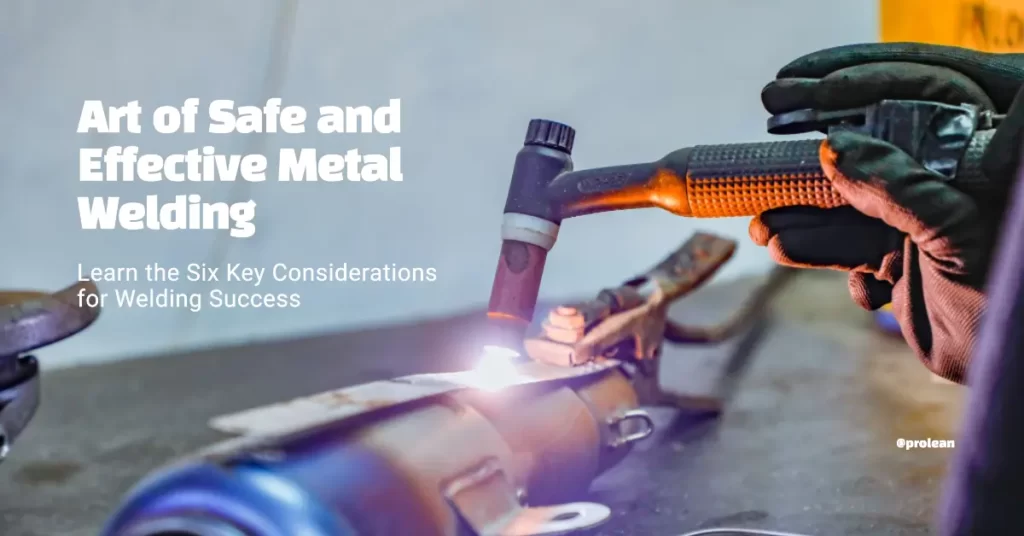 Executing metal welding requires detailed planning and consideration of several factors to ensure safety, quality, and efficiency. These considerations and intricacies of the materials, equipment, and techniques are vital for achieving optimal metal welding results. This article will elaborate on the six crucial considerations anyone should consider before undertaking metal welding, discussing the nuances and subtleties of this complex process.
Executing metal welding requires detailed planning and consideration of several factors to ensure safety, quality, and efficiency. These considerations and intricacies of the materials, equipment, and techniques are vital for achieving optimal metal welding results. This article will elaborate on the six crucial considerations anyone should consider before undertaking metal welding, discussing the nuances and subtleties of this complex process.
1. Asses the Material Compatibility
Assessing material compatibility is the cornerstone of successful metal welding, enabling professionals to anticipate how different metals will interact under intense heat. Different metals, having distinct melting points and thermal properties, necessitate a meticulous selection of welding methods and filler materials.
Selecting Appropriate Metals
For metals like aluminum, which are light and have a high thermal conductivity, specialized welding methods like AC TIG welding are paramount. Ensuring the surface is immaculately clean is equally important to avert any contamination that could compromise the weld’s integrity.
The following are the critical considerations in metal selection;
- Metal Properties Evaluation: Different metals have different melting points, thermal conductivities, and reactions to heat, necessitating an in-depth understanding before selecting a welding method.
- Selection of Suitable Welding Methods and Filler Materials: Depending on the metal type, selecting an appropriate welding method and compatible filler material is crucial to avoid weak or defective welds.
- Professional Advice for Mixed-Metal Welding: Consulting welding professionals or experienced metallurgists can provide insights and guidance when dealing with mixed-metal welding to ensure compatibility and stability.
“ Assessing the nature and properties of different metals is crucial to determining their compatibility, a fundamental step in achieving durable and effective welds,” asserts an experienced welder from Prolean.
Table: Metal Compatibility and Suitable Welding Methods
| Metal | Suitable Welding Method | Filler Material |
|---|---|---|
| Aluminum | AC TIG | Aluminum-based |
| Stainless Steel | MIG, TIG | Steel-based |
| Carbon Steel | MIG, Stick, Flux-cored arc | Carbon Steel-based |
| Copper | Gas Tungsten Arc, Metal Inert Gas | Copper-based |
| Titanium | Gas Tungsten Arc | Titanium-based |
| Nickel | Gas Tungsten Arc, Metal Inert Gas | Nickel-based |
| Cast Iron | Stick, Flux-cored arc | Cast Iron-based |
| Magnesium | Metal Inert Gas, Tungsten Inert Gas | Magnesium-based |
| Zinc | Resistance, Friction | Zinc-based |
| Lead | Oxyacetylene, TIG | Lead-based |
2. Prioritizing Safety Measures
In metal welding, safety is a prime consideration, involving the stringent adoption of protective measures and adherence to safety protocols to mitigate risks associated with sparks, spatter, harmful rays, and fumes.
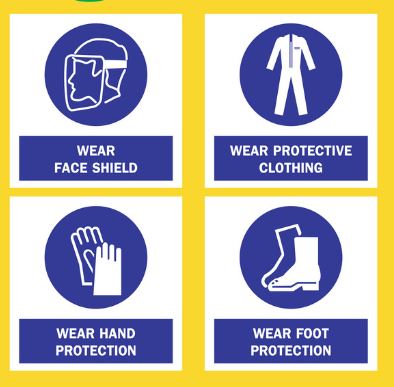
Four Principles of Welding Safety
Welding professionals must don appropriate Personal Protective Equipment (PPE), such as gloves and helmets with face shields, to shield themselves from potential hazards. This is not just about personal well-being but also about ensuring the quality of work, as safe working conditions lead to more focused and precise welding.
Safety Checklist:
- Ensure Protective Equipment is Worn: This includes gloves, helmets with face shields, welding aprons, and safety boots.
- Check Workspace Ventilation: Adequate airflow should be maintained to ensure the dispersal of harmful welding fumes.
- Have a Fire Extinguisher Available: Welding can produce sparks, so having a fire extinguisher nearby is essential.
- Ensure Accessibility to a First Aid Kit: In case of any minor injuries, immediate first aid should be available.
3. Aligning with Welding Codes and Standards
Welding is not about indiscriminately joining metals; it’s a sophisticated process regulated by stringent codes and standards designed to ensure the structural integrity and Reliability of the welds. These guidelines are established by reputable organizations like the American Welding Society (AWS) and the American Society of Mechanical Engineers (ASME). It serves as the benchmark for acceptable welding practices and quality levels.
The AWS D1.1 Structural Welding Code-Steel is one of the most widely used welding codes. There are three vital records or documents that verify if welding quality is being maintained;
- Procedure qualification record (PQR),
- Welding procedure specification (WPS) and the
- Welder performance qualification (WPQ).
Upholding Structural Integrity
Maintaining the structural integrity of welds is an intricate dance between adhering to established standards and applying practical knowledge and expertise. Adherence to standards like AWS D1.1, governing structural welding, and AWS D1.2, outlining the standards for aluminum welding, is essential.
Benefits of Adherence;
- Ensured Structural Integrity: Compliance with standards ensures that the welds can withstand specified stress levels and loads.
- Guaranteed Reliability: Adherence to standards and codes means that the welds are reliable and have been tested for quality.
- Compliance with Regulations: Meeting the established welding standards ensures compliance with regional and industry-specific regulations, avoiding legal repercussions.
Try Prolean Now!
4. Evaluate Feasibility of Welding Techniques
There are different metal welding techniques, such as TIG, MIG, Plasma Arc, and many more. Gaining proficiency in welding techniques is crucial for ensuring the versatility and adaptability of a welder, allowing them to navigate through different projects with precision and efficiency.
1. Focus on Skills and Knowledge
Developing skills in techniques such as TIG, MIG, and Stick welding is essential. TIG welding, known for its precision, is suitable for thin materials. MIG welding, offering adaptability, is useful for a range of metals, and Stick welding is ideal for outdoor conditions, catering to different metals with ease..
3. Ensuring Cleanliness and Stability
A crucial but often overlooked aspect of welding is the preparation of the welding surfaces. It involves cleaning the surfaces with wire brushes or grinders and stabilizing the workpieces to avoid any movement during the welding process. This preparation is not merely a prelude but an integral component of the welding process, directly influencing the outcome’s strength and durability.
- The surfaces should be cleaned meticulously, removing any rust, oil, or other contaminants.
- Using clamps or fixtures to stabilize the workpieces is essential to avoid misalignment during welding.
Click here to download: Different metal welding techniques (Note: “The file contains a detailed elaboration of various welding techniques, their principle, pros, cons, diagrams, and when to use them.”)
5. Assessing Environmental Conditions
Environmental conditions play a pivotal role in determining the quality of metal welding. The presence of elements like wind can significantly disrupt the shielding gas in MIG and TIG welding, potentially compromising the quality of the weld. Hence, creating a controlled environment and assessing external influences are crucial steps in ensuring optimal welding results.
Table: Environmental Control Measures for Sheet Metal Welding
| Control Measure | Description |
|---|---|
| Fume Extraction | Use localized ventilation systems to capture and remove harmful welding fumes. |
| Filter Systems | Implement high-efficiency particulate air (HEPA) filters to purify released air. |
| Protective Barriers | Erect screens to prevent the spread of pollutants and protect bystanders. |
| Welding Procedure Optimization | Adopt techniques that produce fewer emissions and fumes. |
| Eco-friendly Consumables | Use greener welding rods and materials with reduced contaminants. |
| Noise Control | Employ sound barriers and mufflers to minimize welding noise pollution. |
| Recycling Waste | Establish a system for recycling metal scraps and consumables. |
| Reduced Energy Consumption | Utilize energy-efficient welding machines and equipment. |
| Safe Disposal | Ensure hazardous waste like used solvents is disposed of responsibly. |
6. Preparing Welding Surfaces: Laying the Foundation for Success
The preparation of welding surfaces is akin to laying the foundation for a building. The meticulous cleaning and stabilization of surfaces are prerequisites for achieving strong and durable welds. It is these initial steps that determine the subsequent quality and strength of the weld, highlighting the significance of surface preparation in the metal welding process.
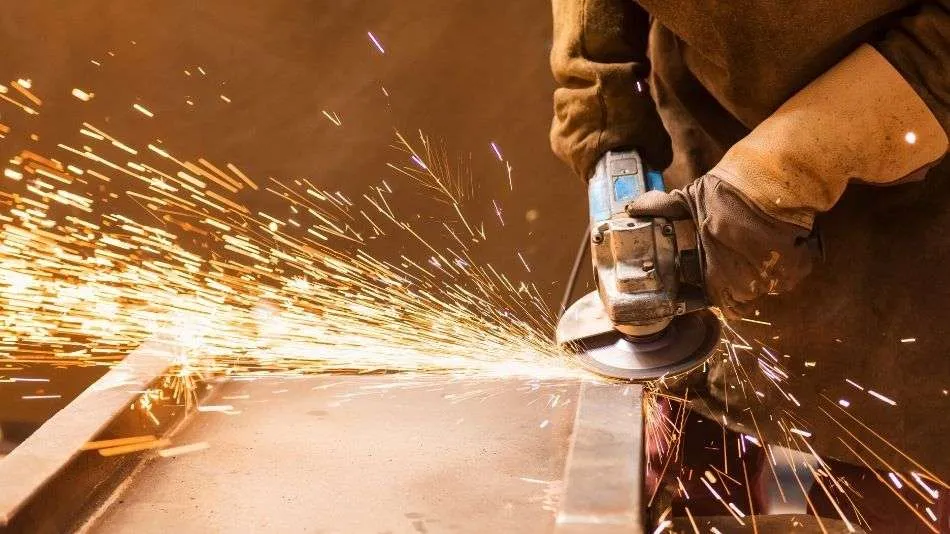
Removing rust from the surface before welding
Adequately cleaned and stabilized surfaces are pivotal for achieving high-quality welds. Any oversight in the preparation can lead to contaminants compromising the weld’s integrity, underlining the importance of attention to detail in this phase of the welding process.
Essential Steps in Surface Preparation:
- Comprehensive cleaning to remove rust, oil, and other contaminants
- Using clamps or fixtures to stabilize the workpieces, avoiding misalignment during welding
- Utilize grit or bead blasting for roughening surfaces and removing stubborn impurities..
- Apply rust converters or other chemicals to treat and protect the metal.
- Check for imperfections, cracks, or any anomalies that might affect the welding process.
- Ensure the workpieces reach a specific temperature, if necessary, to improve weld quality.
Sheet Metal Welding at Prolean: Expertise & Precision
At Prolean, sheet metal welding is not just another process; it’s an art. Our team brings together years of experience and a passion for precision, ensuring that every weld is as perfect as the last. We understand that the intricacies of sheet metal require a keen eye and a steady hand, and we pride ourselves on delivering results that exceed expectations. Also, Our Semi-automatic & automatic welding services bring absolute perfection to weld joints.
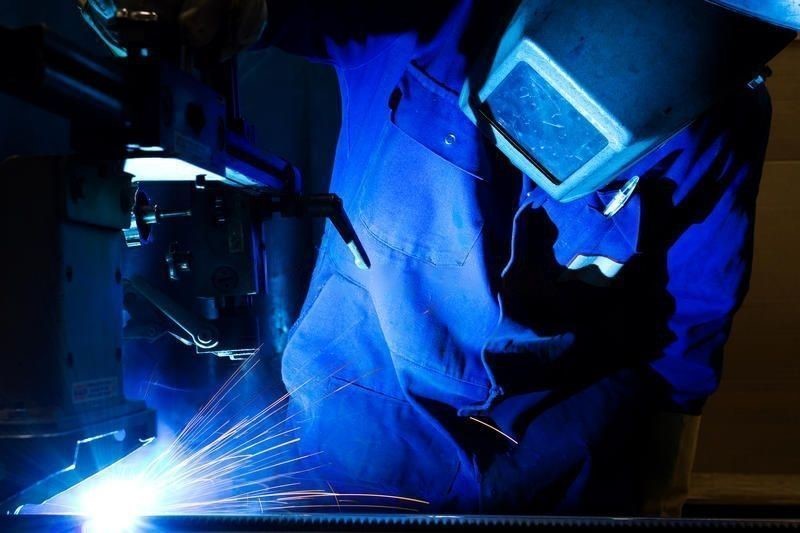
Technician performing the welding
We focus on creating a seamless bond that’s strong, durable, and flawless. Our experts use advanced techniques and state-of-the-art equipment to deliver a finish that’s second to none. Our commitment to excellence has made us a trusted partner for countless clients & industries, and we’re constantly pushing the boundaries of what’s possible in the realm of sheet metal welding.
- Precision Welding: Each weld is meticulously crafted for optimal strength and aesthetics.
- Advanced Techniques: Harnessing the power of the latest welding technologies.
- Quality Assurance: Rigorous testing and inspection to guarantee top-notch results.
- Custom Solutions: Tailored welding services to meet unique project requirements.
- Environmentally Conscious: Adopting practices that minimize waste and reduce our carbon footprint.
Summing Up
Embarking on metal welding is a journey lined with meticulous considerations and careful planning. You can navigate the intricacies of metal welding efficiently by considering material compatibility, prioritizing safety, aligning with standards, preparing surfaces adequately, and assessing environmental conditions. Each consideration is a step towards ensuring every weld’s quality, reliability, and security, propelling the overall excellence in manufacturing processes.
With Prolean’s metal welding services, both individuals and industries can achieve unmatched accuracy and quality in their metal welding projects. Set a higher benchmark and standard with Saftey and effectiveness in metal welding at Prolean.
Read more: Welding vs Other Metal Joining Techniques: A Comprehensive Comparison
FAQs
How important is material compatibility in metal welding?
It’s crucial as incompatible metals can lead to weak welds; understanding metal properties helps in selecting suitable welding methods and filler materials.
Can environmental conditions affect the quality of welds?
Yes, elements like wind can disrupt shielding gas, affecting weld quality; controlling the environment is essential for optimal results.
Why is adherence to welding codes and standards important?
It ensures the structural integrity and reliability of welds, safeguarding against substandard and unsafe practices.
How does surface preparation impact metal welding?
Adequately cleaned and stabilized surfaces are pivotal for achieving solid and durable welds, avoiding contamination and misalignment.


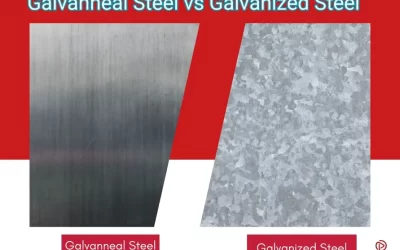
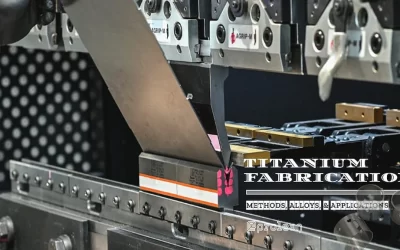
0 Comments